Cave of the Crystals or Giant Crystal Cave (Cueva de los Cristales) was discovered in April 2000 by miners excavating a new tunnel for the Industrias Peñoles mining company, the cave is connected to the Naica Mine at a depth of 300 metres (980 ft), in Naica, Chihuahua, Mexico.
Naica lies on an ancient fault above an underground magma chamber which is approximately 3–5 kilometres (2–3 mi) below the cave. The magma heated the ground water which was saturated with sulfide ions (S2−). Cool oxygenated surface water contacted the mineral saturated heated water, but the two did not mix due to the difference in their densities. The oxygen slowly diffused into the heated water and oxidized the sulfides (S2−) into sulfates (SO42−). The hydrated sulfate gypsum crystallized at an extremely slow rate over the course of at least 500,000 years, forming the enormous crystals found today.
The main chamber contains giant selenite crystals, some of the largest natural crystals ever found. The cave’s largest crystal found to date is 12 m (39 ft) in length, 4 m (13 ft) in diameter and 55 tons in weight. The cave is extremely hot, with air temperatures reaching up to 58 °C (136 °F) with 90 to 99 percent humidity. The cave is relatively unexplored due to these factors. Without proper protection, people can only endure approximately ten minutes of exposure at a time.
The Cave of Crystals is a horseshoe-shaped cavity in limestone. Its floor is covered with perfectly faceted crystalline blocks. Huge crystal beams jut out from both the blocks and the floor. The caves were accessible because the mining company’s pumping operations keep them clear of water. If the pumping were stopped, the caves would again be submerged in water.
The crystals deteriorate in air, so a group of scientists known as the Naica Project had been heavily involved in researching these caverns, the Naica Project was attempting to visually document the crystals before they deteriorated further.
In February 2017, mining operations had ceased and the caves have re-flooded.
A thousand feet (304 meter) underground, the Cave of Crystals is just one of a series of glittering caverns beneath the Chihuahuan Desert’s Naica mountain. Much of the complex would naturally be filled with scorching water, were it not for industrial pumps that facilitate the mining of silver, zinc, lead, and other minerals in the caves.
In the two-story-tall, football-field-size Cave of Crystals, enormous beams of gypsum—among the largest freestanding crystals in the world—sprout haphazardly from the ceiling, floor, and walls. Individually, though, the crystals appear anything but haphazard, sporting the sharp, geometric appearance that scientists call euhedral.
This jewel-like effect makes the giant crystals truly unique, according to John Rakovan, a mineralogist at Miami University in Ohio, who was not involved in the project.
“When crystals get larger and larger, they become less euhedral, typically”—and more rocklike. “Scientists didn’t think it was possible to get large crystals that are so morphologically perfect” before the Cave of Crystals discovery, Rakovan said.
The translucent columns also resemble giant pillars of ice but are warmed by superheated air leaking up from underground magma chambers.
Exploring the Naica caves requires more than just industrial strength water pumps. Scientists entering the complex in 2008 and 2009 wore custom-made, 45-pound (25-kilograms) cooling suits that extend mission times from 15 minutes to an hour.
Each suit contains several ice-filled compartments as well as respirators connected to ice-filled backpacks, which send cool air to the wearer’s lungs. Masks protect the eyes, which can scorch in the cave’s heat.
“It’s funny, because when you look at the pictures of us in there in the suits, it looks like we’re in an ice chamber, but it’s just the reverse,” said Penelope Boston, of the New Mexico Institute of Mining and Technology.
Even with the protective gear, the scientists often operated at the edge of safety.
Ontario, Canada-based astrophysicist Sara Poirier said, “We all just kept pushing further and further into the cave, so by the time you are heading back, you’ve pushed yourself beyond the limits that are safe”—and that’s with the gear operating properly.
Though the calling card of the horseshoe-shaped Cave of Crystals may be its massive mineral formations, some of its biggest surprises are literally microscopic.
In 2008 a team of scientists including New Mexico Techs Penelope Boston investigated the cave and found microbial life living in tiny air pockets in the crystals.
In December 2009 Boston returned to the cave with another team. From pools of water that hadn’t been present during her first trip, the scientists collected bacteria as well as viruses that prey on the bacteria—something that was suspected but had not been confirmed on the first expedition.
Sure enough, the team found as many as 200 million viruses in a single drop of Cave of Crystals water.
When you’re in the caves, you’re overwhelmed by the harsh conditions, but you’re also overwhelmed by the beauty.
Even if scalding water submerges that beauty, the caves’ scientific potential will live on.
2Kviews
Share on Facebook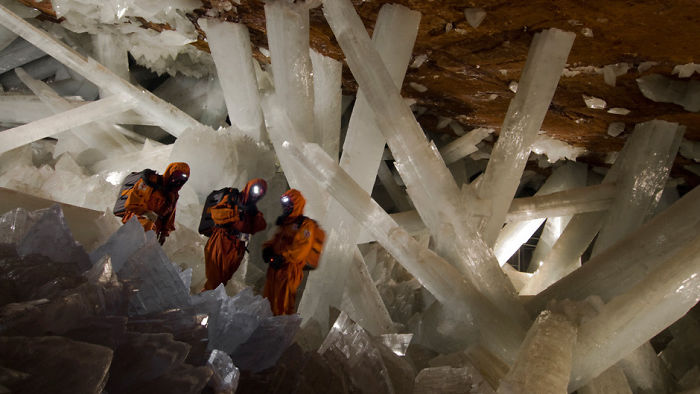
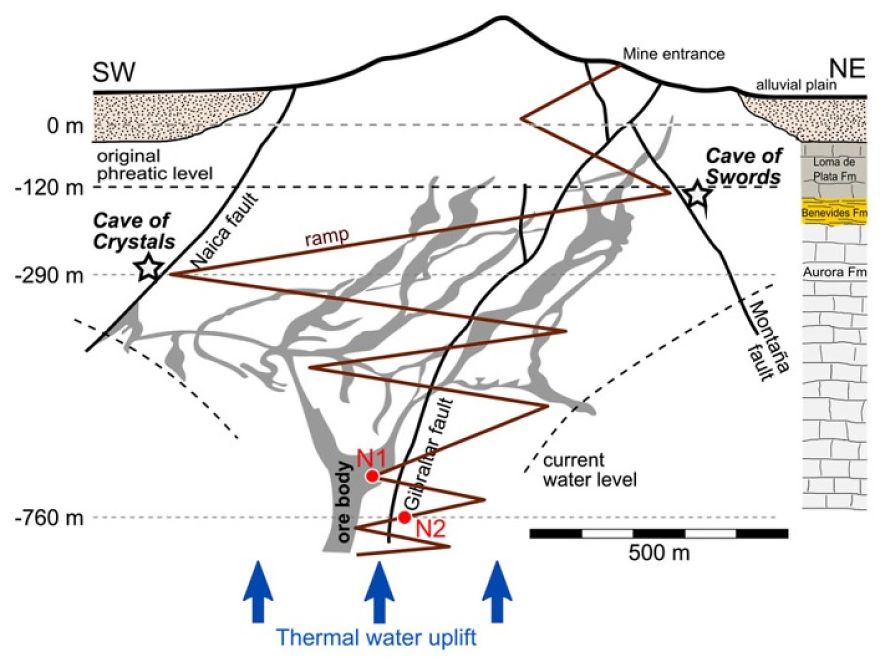
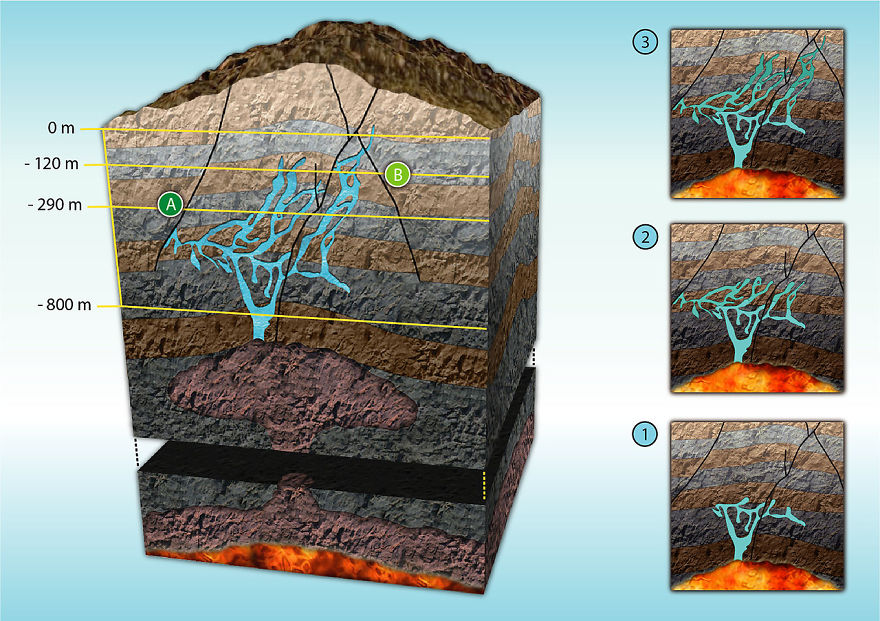
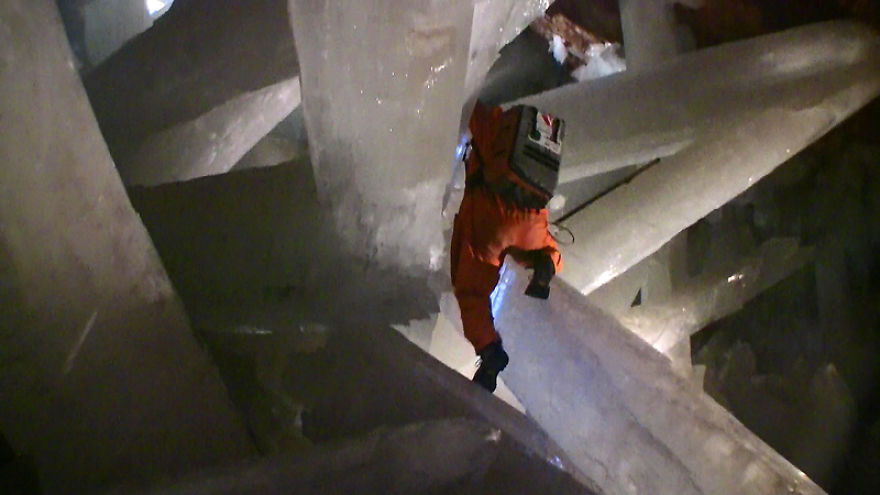
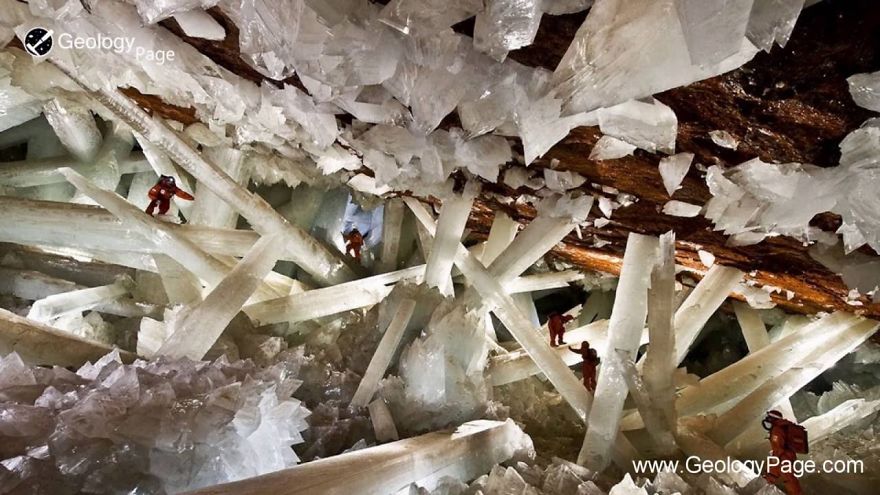
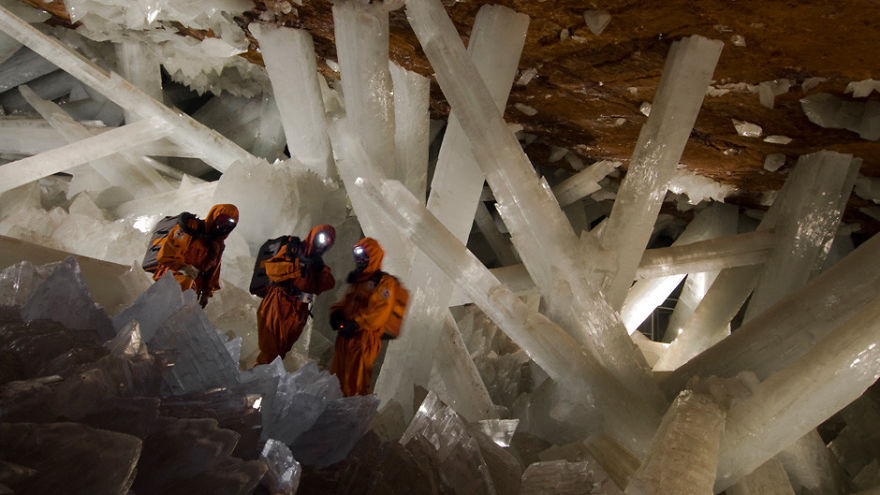
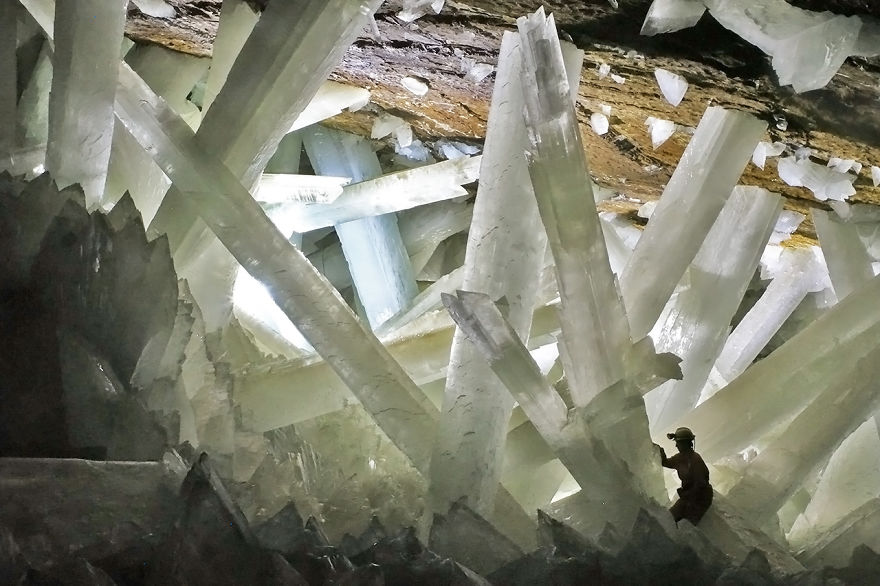
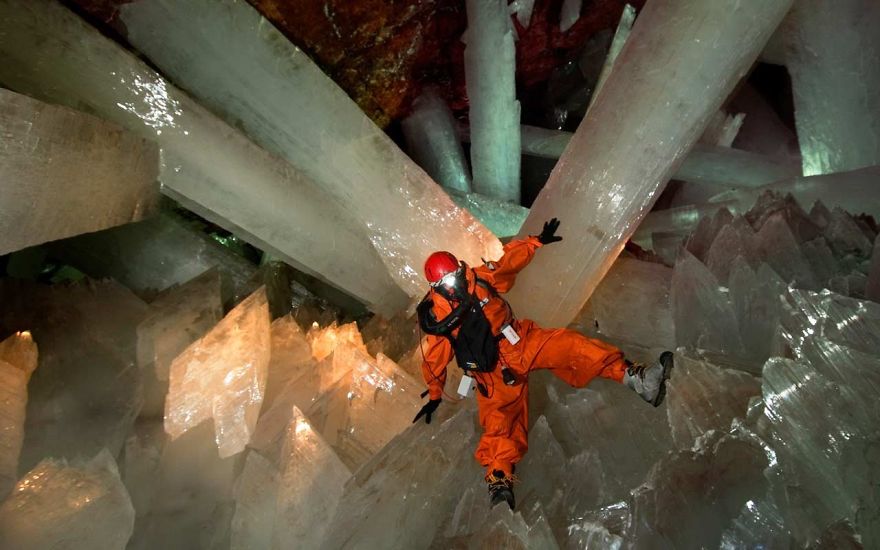
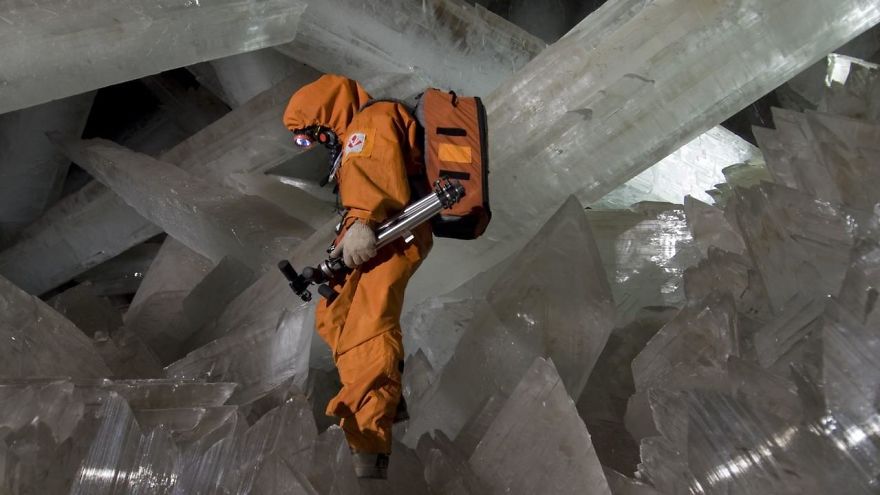
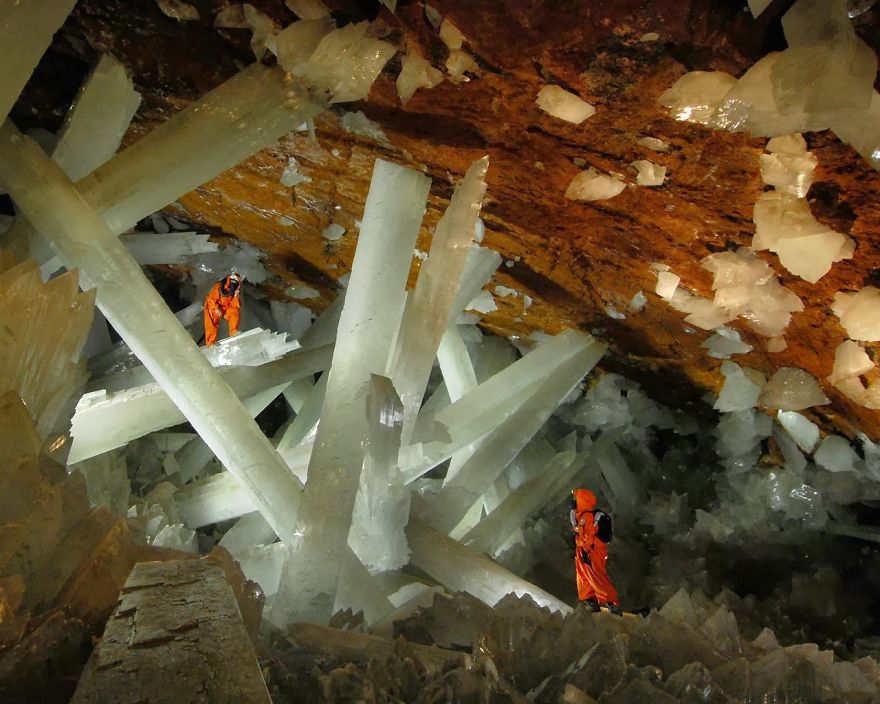
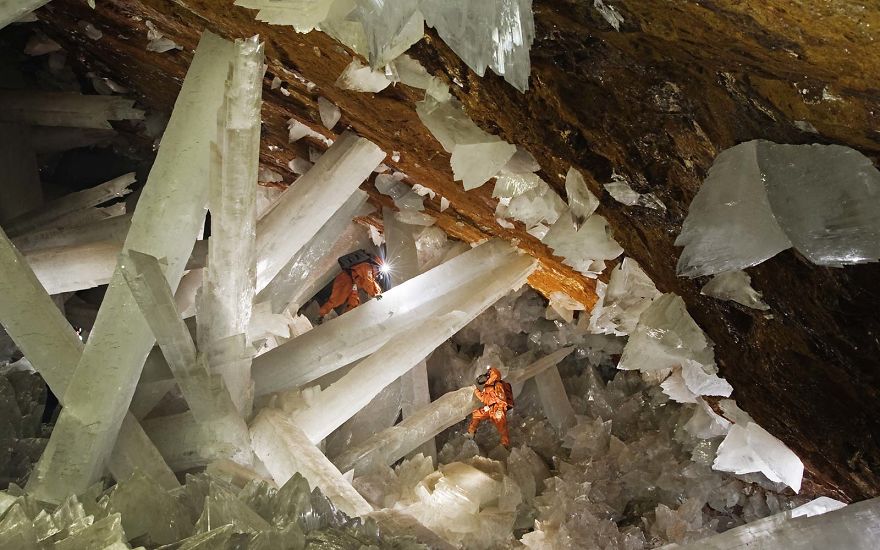
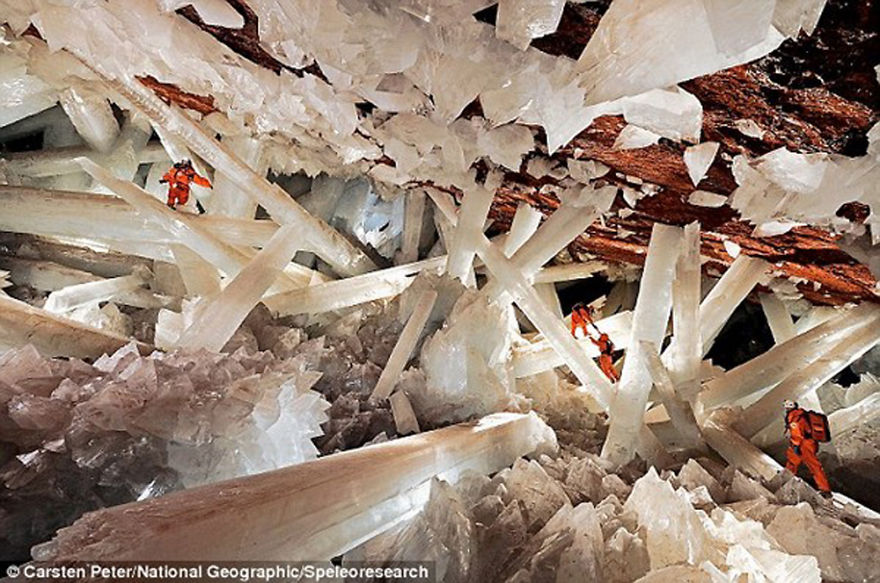
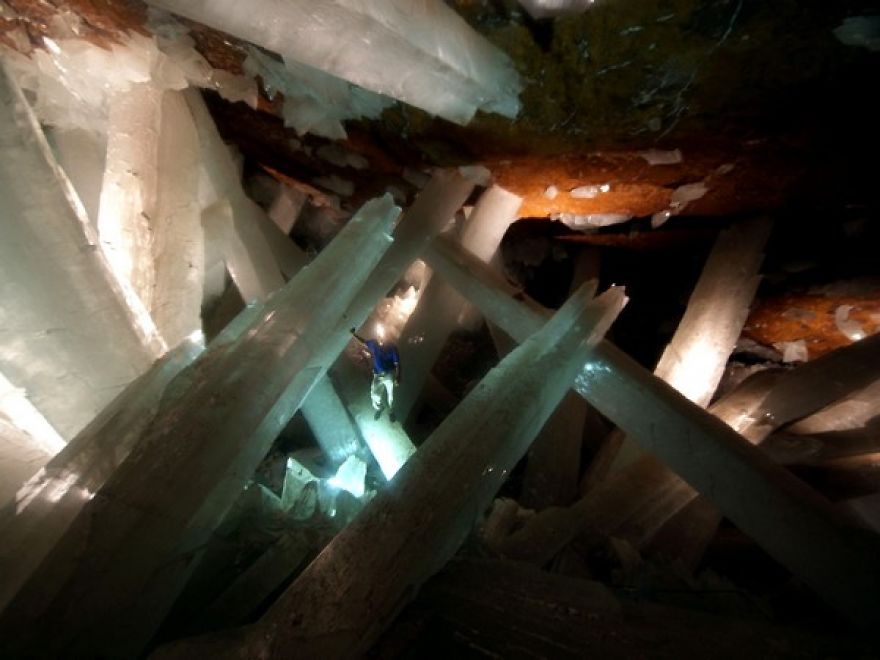
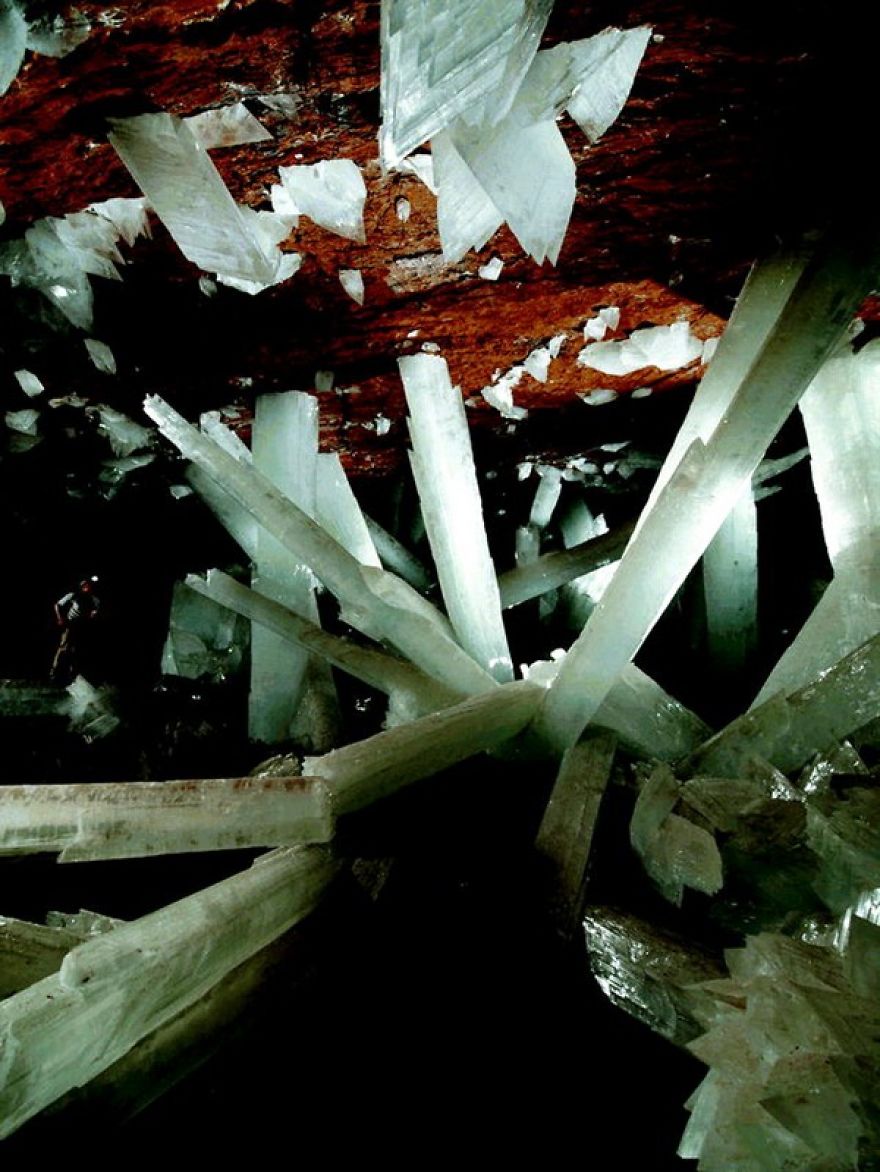
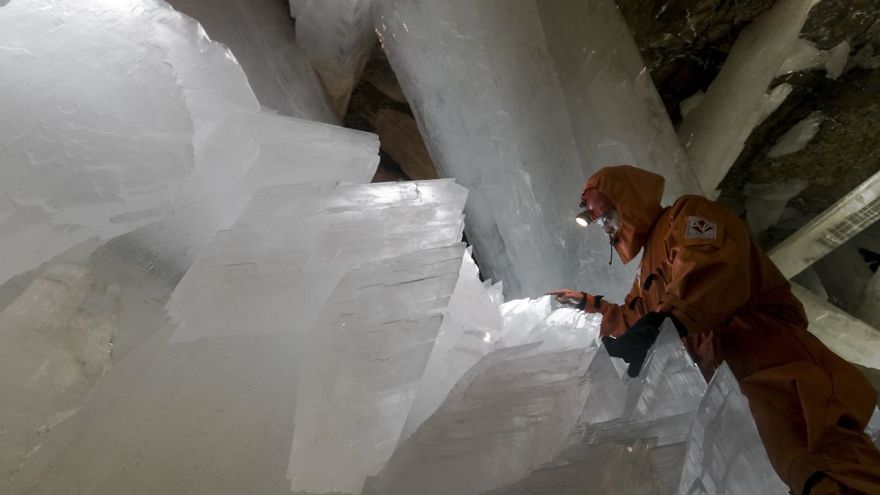
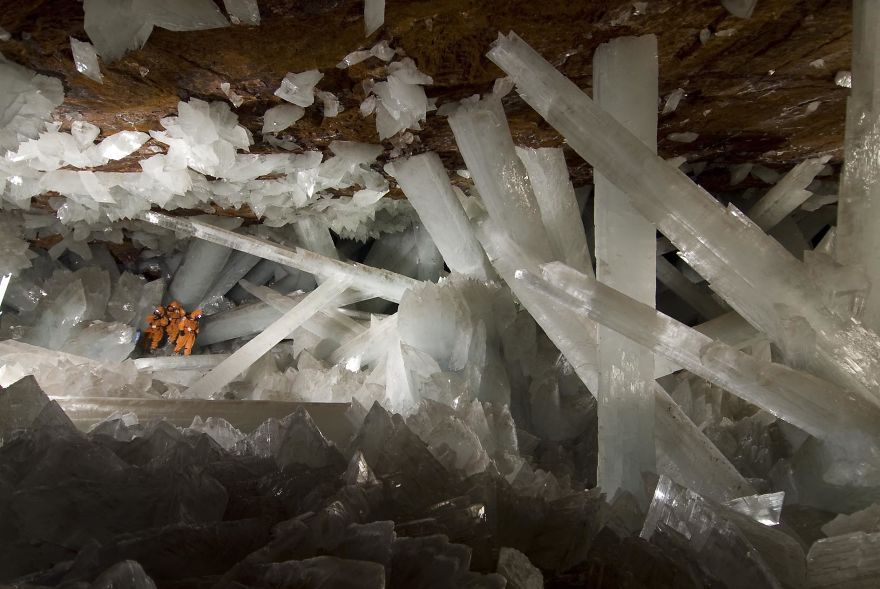
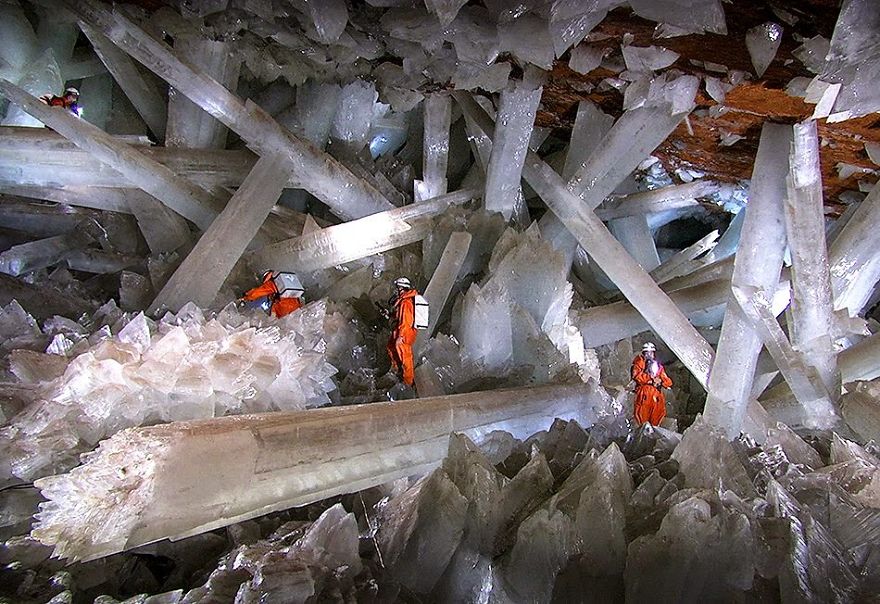
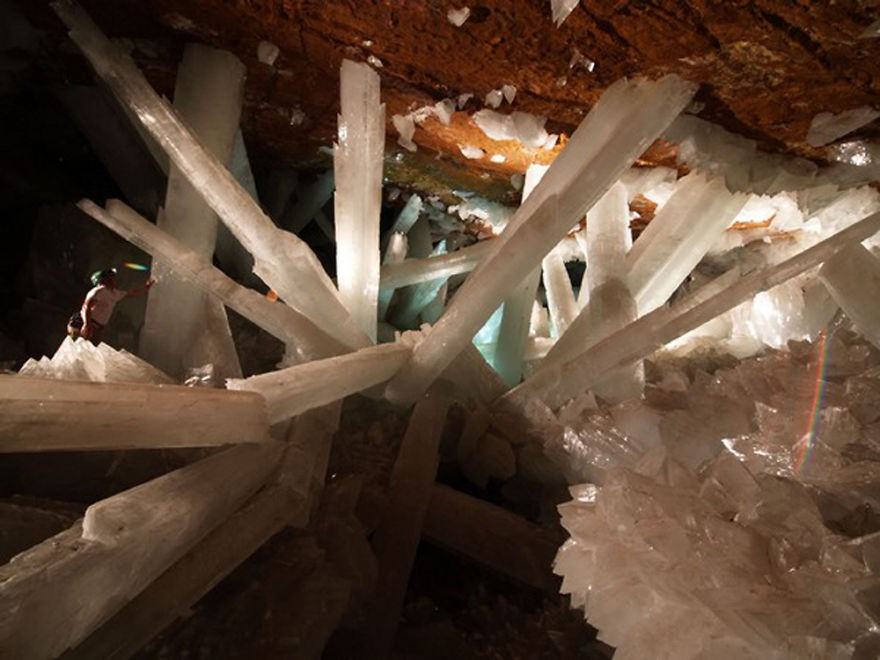
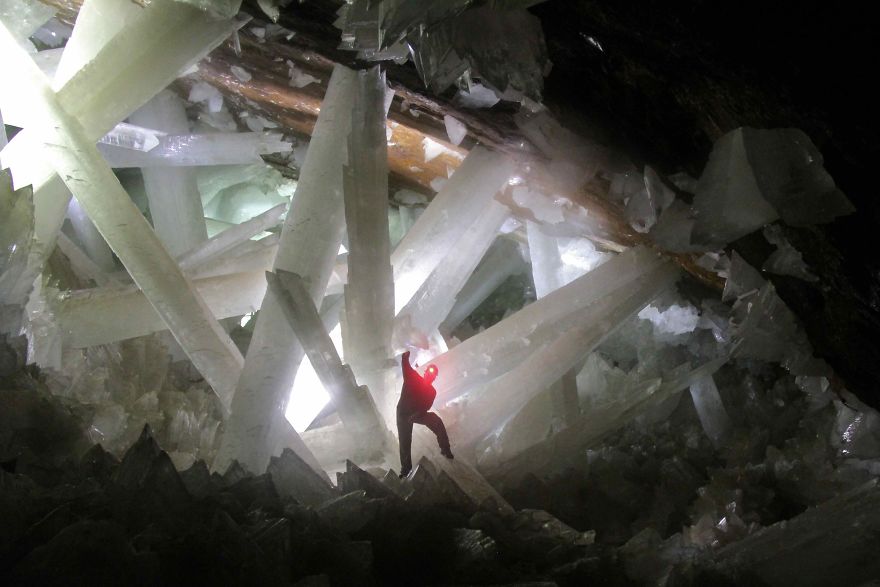
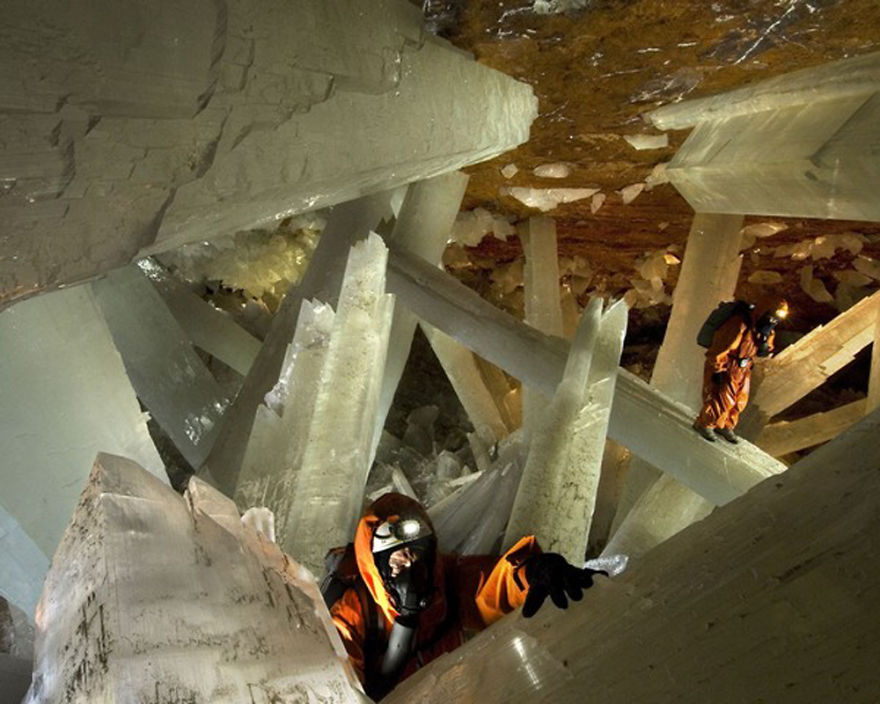
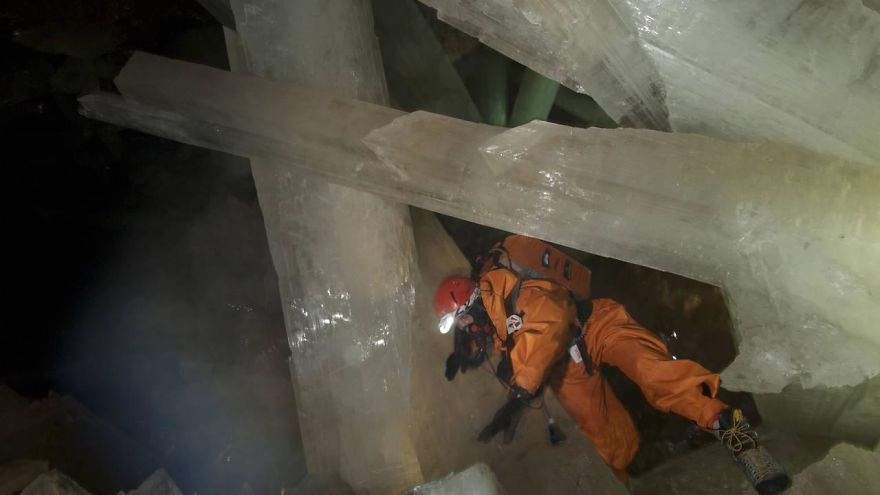
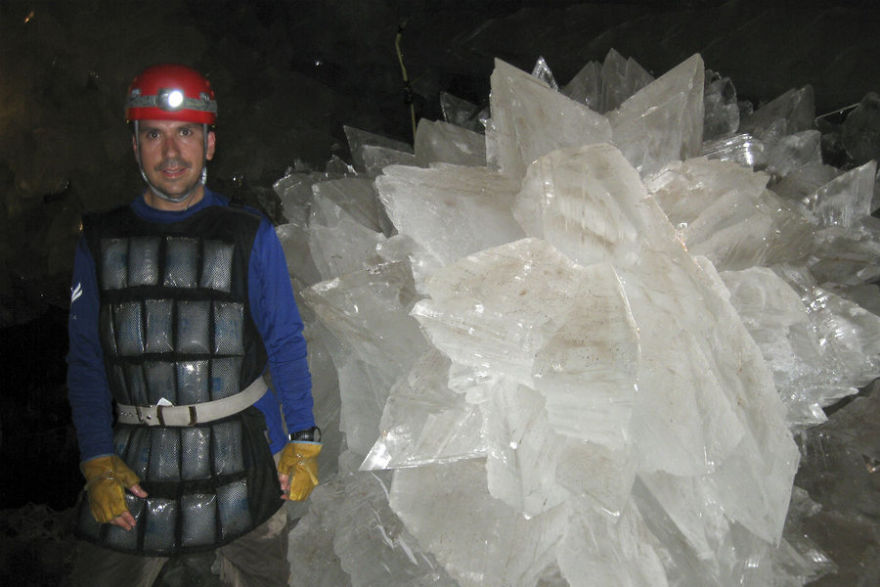
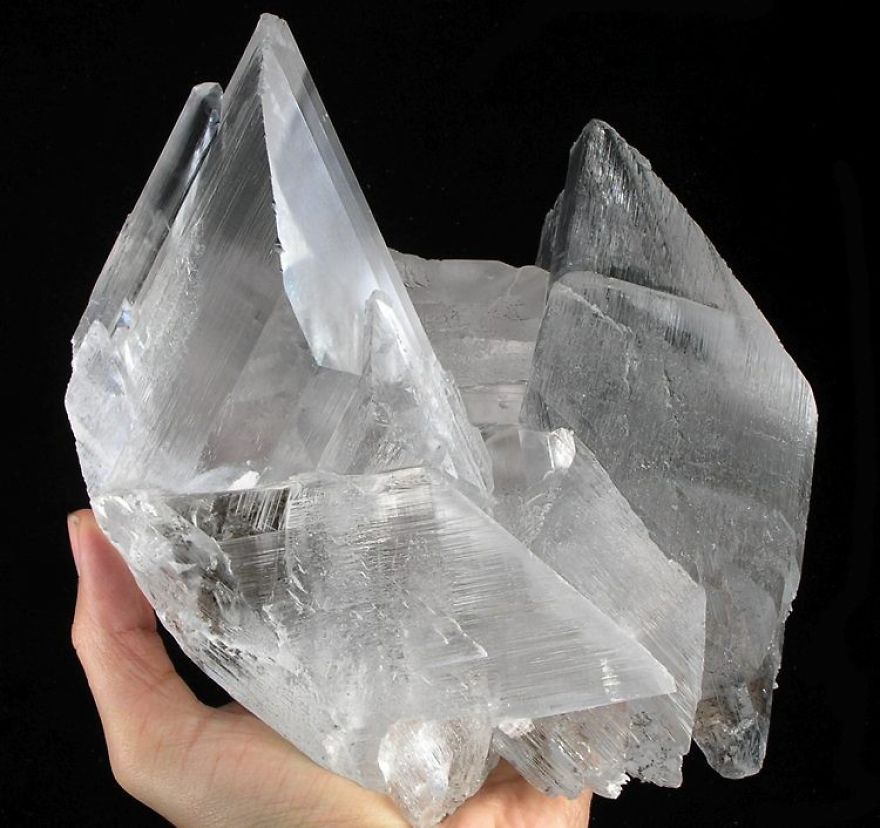



2
1